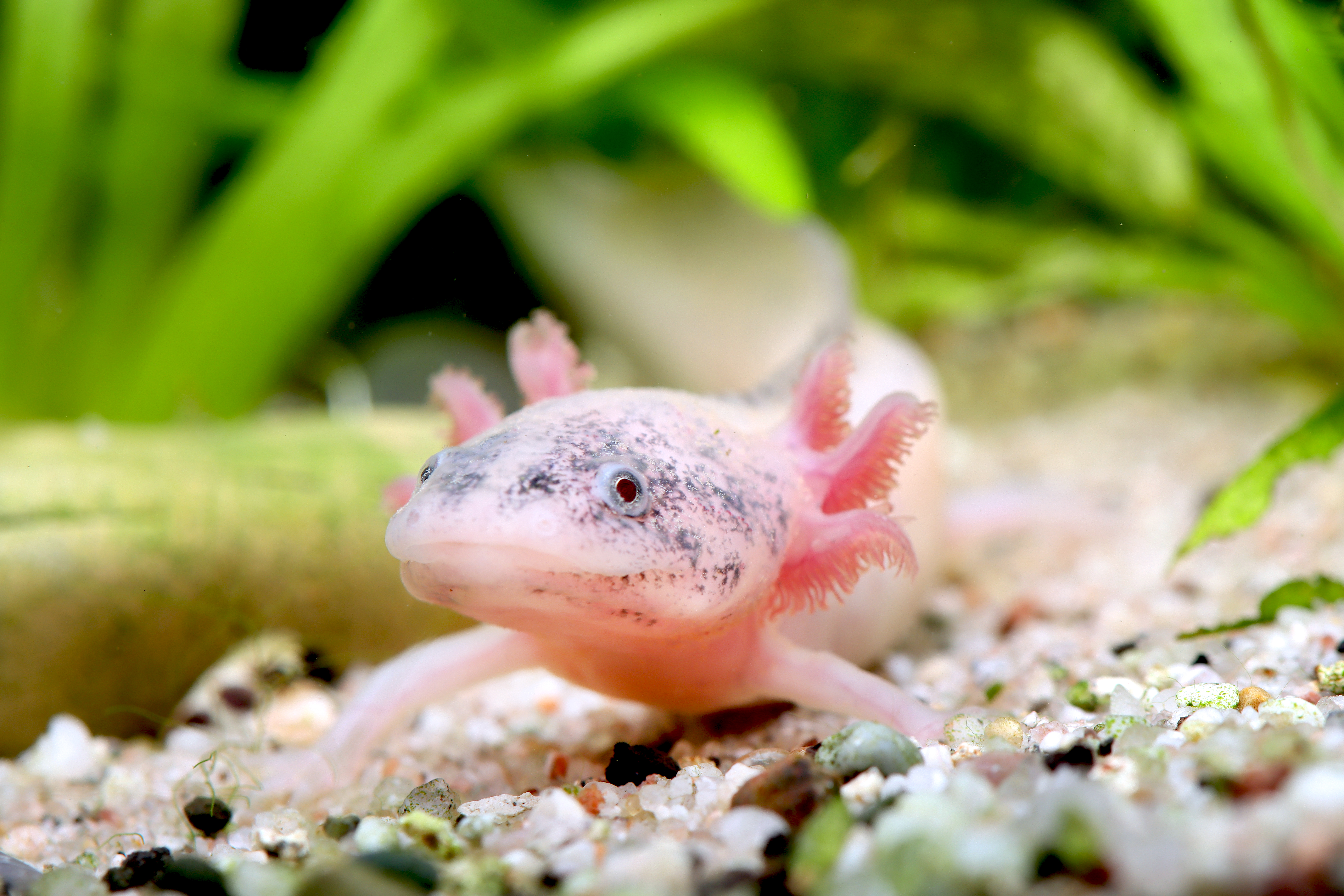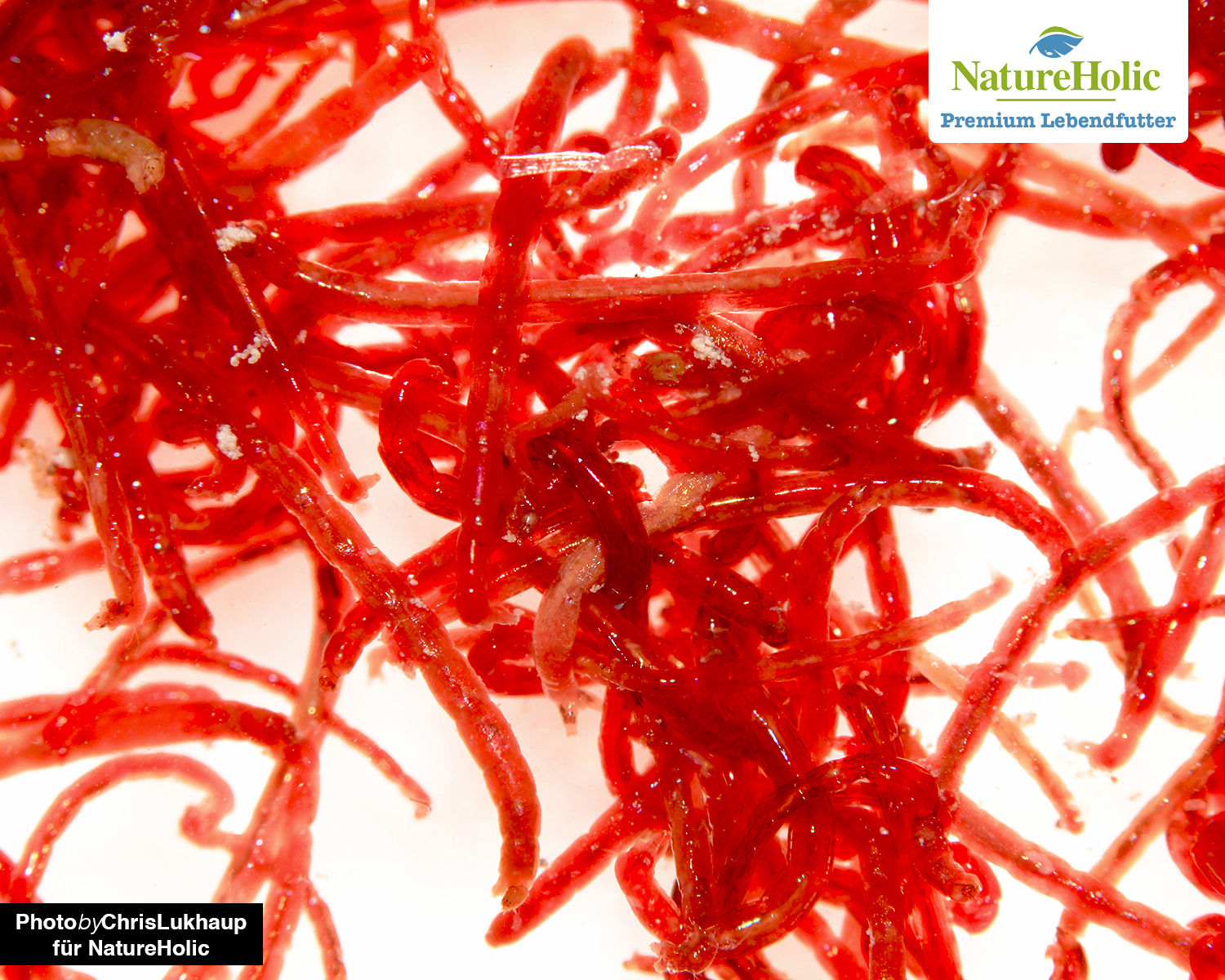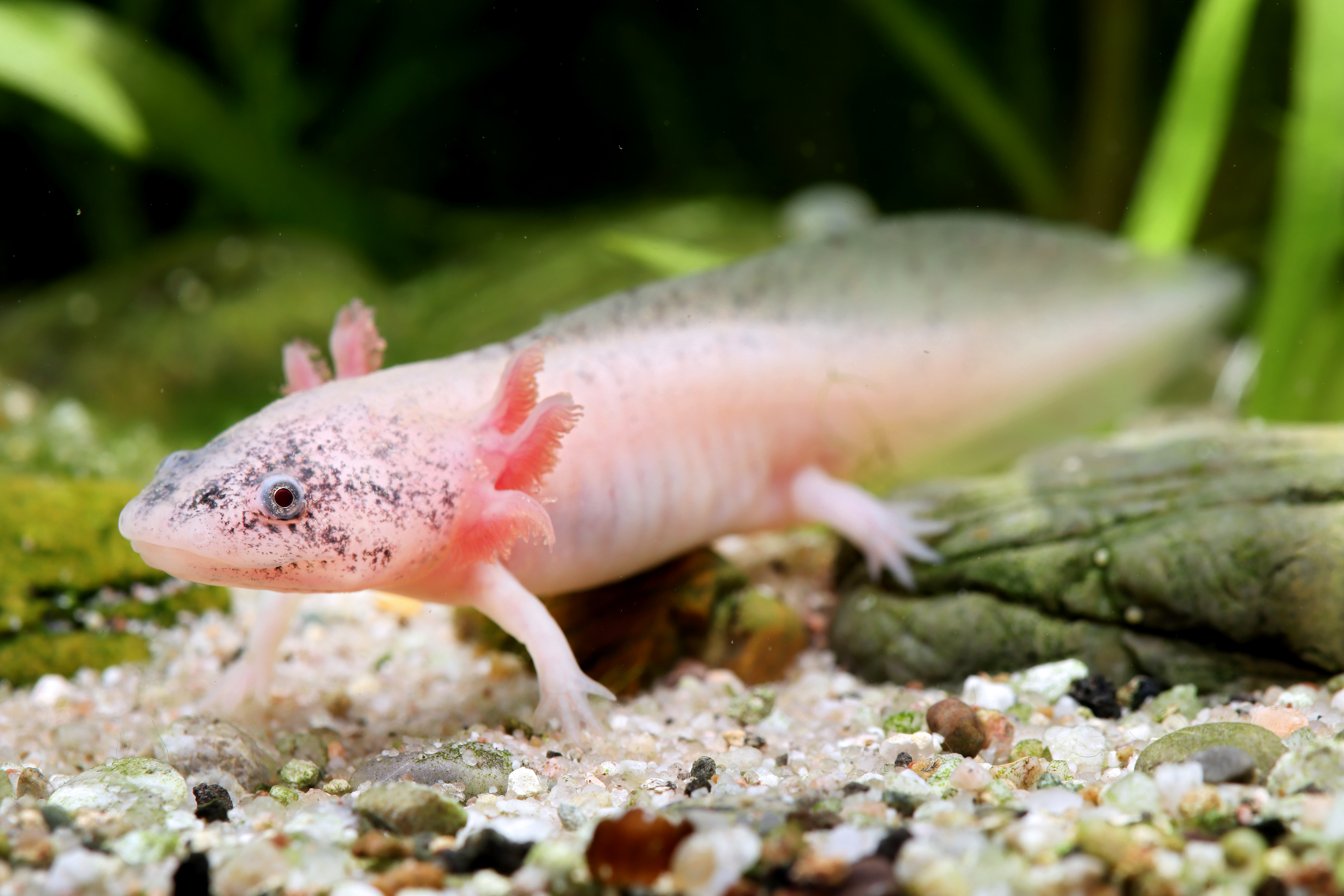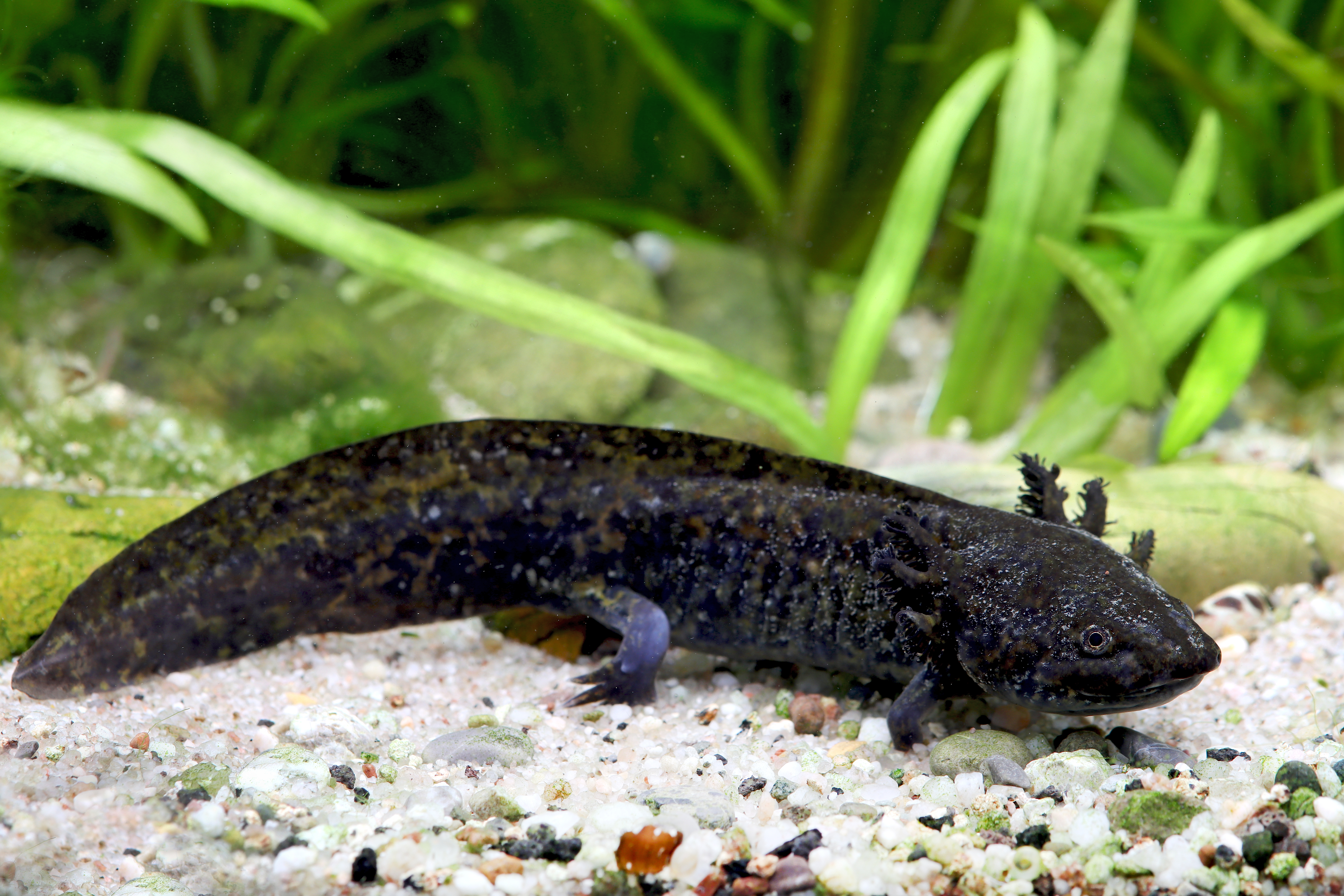Axolotl - the sacred animal of the Aztecs in the aquarium
The Mexican caudate axolotl belongs to the cross-toothed newt family and its scientific name is Ambystoma mexicanum. Axolotl is an Aztec word and means water monster or water god - it is composed of the word atl, which stands for water in the Aztec language, and xolotl, the name of an Aztec god. However, its status as a sacred animal did not necessarily prevent the Aztecs from catching and eating axolotls.
With good and above all species-appropriate keeping axolotls become amazingly old, 10 to 15 years are rather the rule than the exception - there are even animals which have become 25 years old.

The name "water monster" refers only to the bizarre appearance, the Axolotl is actually a very nice aquarium animal! Keeping axolotls is not particularly difficult at all. We'll take a closer look at this fascinating lizard animal in the episode.
What makes axolotls so special?
The Axolotl is a particularly interesting representative of the amphibians: It is a so-called permanent larva! Normally, amphibians undergo a metamorphosis from larva to adult, but the Axolotl does not, it remains in the larval stage. This can be recognized by the external gills. By the way, this is the natural form of the lotl, the animals are not specially bred in this way, but also occur in their natural biotope. If hormones are given artificially, a metamorphosis can be triggered in the axolotl, but it is not necessary - the caudate amphibians can reproduce without problems despite their larval stage.
Alexander von Humboldt brought the first axolotls as a curiosity from his voyages of discovery to Europe at the beginning of the 19th century.
Appearance and physique of the axolotl
An adult axolotl grows to an average length of about 23 to 28 cm, but - rather rarely - there are also much larger specimens that can grow to between 30 and 40 cm in length. The lotl has funny dark, rather small eyes and cute looking little arms. With its rowing tail it moves forward in the water. Its flat head carries a very wide mouth, which looks as if the animal is smiling permanently. This gives the caudate an extremely friendly appearance. A swimming fringe extends from just behind the head longitudinally across the back over the tail to just before the cloaca under the belly.
Regeneration ability in the Lotl
The axolotl has an almost legendary ability to regenerate. If it loses limbs or even gill parts, it can simply regrow them over time. Even the loss of a leg is thus no leg break!
Sex differentiation in the Axolotl
To see if your lotl is a male or female, you need to look at its butt: The cloacal bulge in the male bulges out a bit, in the female the cloaca is flat.
By the way, axolotls become sexually mature between 1 and 2 years of age.
Color forms with the Axolotl
Axolotls are easy to breed and you can buy them in many different colors and shapes for the aquarium. You can mix the different colors very well, because the lotls don't care how their mates look like.
In the axolotl there are three different color cells, which are responsible for the coloration:
- Melanophores produce dark pigments
- Xanthophores produce yellow pigments
- Iridophores produce shiny pigments
The following colorations are possible in Amblystoma mexicanum:
- Wild form: the basic color of wildlings is light gray to black with lighter spots, and the gills are usually dark. Many wildlings have shiny spots in the tail area. They have all three color cell types.
- Melanoid: These axolotls are dark brown to black. The gills are also dark colored. They do not have shiny iridophores.
- Axanthic: A lotl with no xanthophores, meaning only dark pigments, black or dark brown, but with iridophores, meaning shiny spots.
- Pigmentless Albino: This color form is all white except for the red gills and has red eyes. It does not possess any color cells.
- Axanthic Albino: Does not possess yellow and dark pigments, but has iridophores and thus a slightly metallic sheen, in addition to red eyes and red gill branches.
- Golden Albino or Humphrey's Axolotl: These literally golden axolotls lack the dark pigments, but yellow colors are present, as are the shiny pigments of the iridophores. The gills are red. Scientist Humphrey was the first to achieve this color pattern by crossbreeding tiger salamanders.
- Melano-Albino: Here not only the dark pigments from the melanophores are missing, but also the metallic shimmer of the iridophores is not present. The xanthophores that are still present are responsible for the slight yellow tint. Eyes and gill branches are red.
- Whites: Unlike the pure albinos, the whites with their red gills have few other color pigments due to iridophores, melanophores and xanthophores - only the distribution is very uneven and often limited to the back and head. Whites have black eyes and are the most common color form in aquaristics.
- Harlequin: A variety of the whitetail in which the color pigments show mainly in the head area and look like a mask.
- Copper or cookie: The copper colored Axolotl is a quite rare color form, which shows lighter and darker points on a creamy copper basic color. The gills are also red here.
Where do Axolotls come from?
The axolotl is originally from Mexico, where it is endemic to Lakes Xochimilco and Chalco near Mexico City. In the past, axolotls also lived in other lakes, but they are now extinct there. The lakes are of volcanic origin. The lotl is becoming rare: today, only 0.3 animals are found per square kilometer in Lake Xochimilco.
Axolotls also need rather cool and very oxygen-rich water in the aquarium, just like in their biotopes in the highlands of Mexico. In nature, the nocturnal ambushers live mainly at the bottom of the lake. In the aquarium, however, they can also be seen during the day.
Because the native waters of the caudate do not dry out, the animal was able to survive in larval form and therefore does not metamorphose into a land-dwelling caudate.
Feeding axolotls correctly
As lurking hunters, axolotls quietly and patiently wait for their food: they eat invertebrates such as small crustaceans, insect larvae and worms, but also small fish. In addition, the tailed amphibians also help themselves to the spawn of other amphibians and even their own offspring. When it comes to food, the Lotl takes no prisoners!
In the aquarium axolotls like to eat living Mosquito larvae worms and insects, but also crustaceans like Gammarus are taken with pleasure. Axolotl pellets are also possible. Younger specimens are fed daily, adult Axolotls only need food twice a week. When you feed your Axolotl, you should dim the light in the aquarium. This is very beneficial for these rather nocturnal creatures.

Axolotl in a community aquarium, yes or no?
In general, Axolotls are quite special in their demands on water quality, aquarium temperature and aquarium setup and should therefore preferably be kept in a species aqu arium. Smaller fish become live food, as well as Snails or ShrimpsCrayfish can sensitively pinch and injure the caudate amphibians, so they are not a good choice either. Larger fish also pose a risk of injury to the sensitive gills and can also stress the Lotl quite a bit. Very dangerous for all amphibians is the chytrid fungus Batrachochytrium dendrobatidis, BD for short, which causes chytrid myosis, also fatal for axolotls, which has been causing worldwide amphibian mortality for several decades. Crayfish and other aquatic animals can transmit the dangerous fungus. For all these reasons we do notrecommend Axolotl for community aquariums!
Which aquarium size for how many Axolotl?
You can keep Axolotls in a species aquarium very well individually or in pairs. Per Lotl you calculate as fist forms 50 to 80 liters of aquarium volume, whereby the floor space is much more important than the aquarium height!
- Single keeping: aquarium with 80 cm edge length and approx. 100 liters volume
- Pair keeping or small group up to 3 animals: aquarium with 100 cm edge length and approx. 160 to 200 liters volume
If there are more animals, the aquarium must of course be even larger and equipped with many retreats and hiding places.
What does the optimal aquarium for Axolotl look like?
An aquarium for Axolotl must be equipped with natural sand or fine-grained, rounded natural gravel with a maximum grain size of 3 mm. Axolotls always unconsciously pick up a few pebbles and grains of sand when foraging. Pebbles that are too large lead to a fatal intestinal obstruction, sharp-edged pebbles injure the animals, and the amphibians can simply poison themselves on colored plastic gravel.
With roots and stones and especially with caves of suitable size, you can create good hiding places and structures for the axolotls in the aquarium, but they also need open spaces to run around.
The Plants for an Axolotl aquarium should absolutely cope with cool water. Robust species like hornwort, nixwort, java fern, anubias or various Mosses, Vallisneria and Co. are a good choice for an aquarium with the amphibians Floating plants provide the necessary shading, which suits the rather light-shy amphibians.
Filtration, oxygen supply and water temperatures
The water temperature in the aquarium isimportant for Axolotl: The animals are cold water animals and need a temperature range of 12 to 20 °C maximum. Higher temperatures quickly lead to severe stress and subsequently to serious diseases. Especially in summer, the water temperature is therefore a challenge - the Axolotl aquarium does not need heating, but it does need effective cooling! Often the usual aquarium coolers based on fans are not strong enough - cooling units for aquariums, which are originally used in marine aquaristics, have proven to be ideal. However, this is of course also a maximum solution in terms of price.
If it gets too warm in your home and you cannot cool your aquarium sufficiently, you can keep your Axolotl in a cool cellar over the summer.
The aquarium for the Mexican tailed amphibians absolutely always needs an efficiently working filter - axolotls depend on very clean and oxygen-rich water. However, the current should not be too strong, so that the amphibians are not stressed. Good experiences have been made with sufficiently dimensioned External filterthe filter outlet should be adjusted in such a way that there is a very good water movement at the water surface and thus also an effective gas exchange.
At which water values do Axolotls feel comfortable?
Axolotls need medium to hard water with a total hardness of more than 6 °dGH and with a pH value of 7 to 7.5, maximum 8. Too soft water leads to stress and can cause the amphibians to lose their color. If your tap water is too soft, you can mix it with a special Hardening salt for aquaristics to enrich it with minerals.
Heavy metals such as copper should The nitrite value should be a maximum of 0.3 milligrams per liter in the aquarium, a nitrate content of up to 25 mg/l is still okay, higher than 40 mg/l it should never rise. Axolotls may react very sensitively to chemical water additives, these should be avoided at all costs.
Axolotls react very positively to humic substances such as alder supplements or almond leaves . They can even be used for disease prevention.

Diseases and prevention in the Axolotl
Although Axolotls are considered to be very robust animals if the keeping conditions in the aquarium are suitable, they can become ill with bacterial or fungal infe ctions or become susceptible to parasites if stressed by too high aquarium temperatures, lack of oxygen, too strong a current or unsuitable water values.
An infestation with the dangerous chytrid fungus Batrachochytrium dendrobatidis or BD can be recognized by brown discolorations on the mouth, feet, cloaca, abdomen or tail area and by a strong hornification on the flanks. If diagnosed early, a bath with Lamisil can help - but please only after consulting a veterinarian. Basically you should do everything to avoid an infection with this very dangerous pathogen! The aquarium must be thoroughly disinfected before the infected animal is allowed back into the aquarium after treatment.
Axolotls can also suffer from parasite infestations - gill crabs can cause bad inflammations. Ciliates can also colonize especially weakened animals and make them ill. Infested axolotls become sluggish and do not eat well. Flagellates that spread in the colon can also cause skin problems. Also causing skin problems is an infestation with the protozoan Ichtyosporea, which causes vesicles and subsequently severe sores and growths. There is no treatment against this parasite.
Furthermore, axolotls can also suffer from fungal diseases or bacterial infections in case of stress and poor husbandry. The best treatment for these diseases is a salt bath.
Salt baths - short term or permanent
Salt baths have proven to be an effective first aid measure for axolotls with a fungal or bacterial infection. For a short-term bath you dose 1 heaped teaspoon of dishwasher salt to 1 liter of water, in which you put the affected axolotl for 20 minutes. Repeat this daily until the symptoms improve.
For a permanent salt bath, add 1 heaping teaspoon of dishwasher salt to 10 liters of water and place the lotus in this solution. Renew daily. After 5-7 days the symptoms should have improved.

